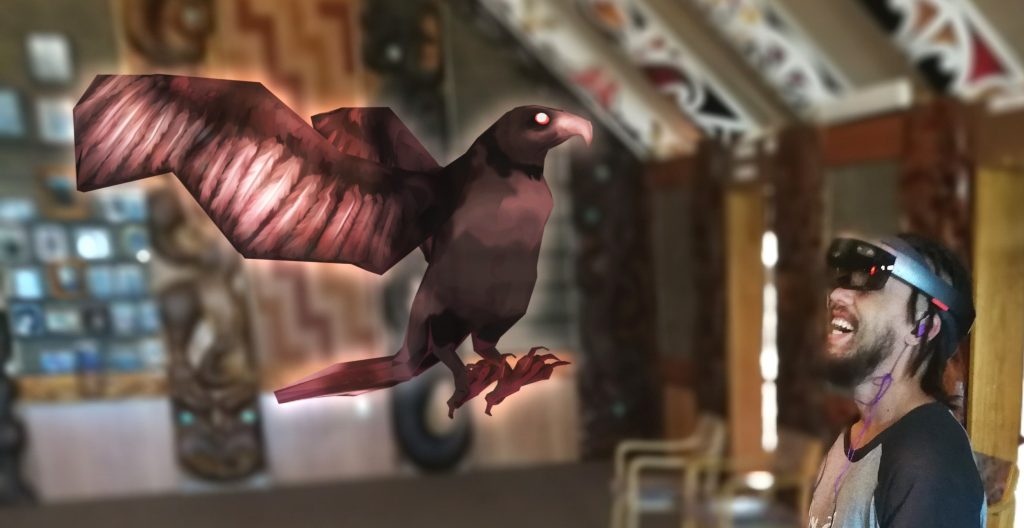
HoloLens, Mixed Reality
Old and New: HoloLens technology brings new life to ancient indigenous stories
A Māori elder in New Zealand dons a state-of-the-art HoloLens headset for the first time. As a 3D image flits across her visor, she can only look on amazed – not just by the newness of the technology, but also by the familiar sacredness of what she sees.
Owaaku – a legendary eagle she first learned about on her grandmother’s knee – is now flying above and around her. Seeing it come to life so vividly as a holographic image brings tears to her eyes.
For many around the world, digital transformation can be regarded as a threat to traditional ways of life. But in Australia and New Zealand, some indigenous groups are embracing emerging technologies. They see them as tools by which to safeguard and strengthen their ancient heritage and cultures into the future.
An example is the Ngāti Whātua Ōrākei of New Zealand, or Aotearoa. The powerful symbol of Owaaku has long sat atop an intricately carved pou (wooden ceremonial post) that towers over their whare tupuna (traditional meeting house) near the country’s largest city, Auckland, or Tāmaki Makaurau.
Portraying such a precious symbol in interactive mixed reality was the result of a sensitive cultural, artistic, and technical collaboration among Microsoft, its New Zealand partner, Datacom, and the Ngāti Whātua Ōrākei themselves.
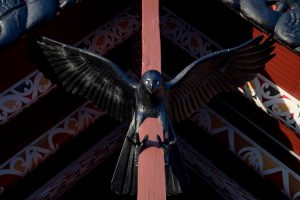
Datacom used a rapid prototyping process to create the first 3D version of the eagle and much care was taken by the community to ensure that the graphic depictions and cultural narratives were absolutely correct when viewed through HoloLens.
It took months of careful and detailed effort before the team was ready to show their work to senior members of the whānau, or tribal family. Te Aroha Morehu, who is Innovation Officer for Ngāti Whātua Ōrākei, says this special HoloLens experience was an emotional step towards the future of their iwi, or tribe.
“This is truly the intersection where ancient myths meet cutting-edge innovation. We are preserving stories for new generations to enjoy,” he says. “It is important to remember: we are our stories.”
Te Aroha says the Owaaku project is just a start. Ngāti Whātua Ōrākei is now working with the HoloLens team at Datacom to create a full story-telling platform that will have his people’s ancestors appear virtually and speak about the past. There are also plans to create a 3D virtual marae (tribal grounds) with avatars of community members who can tell stories.
READ: Award for revitalizing the Māori language with computers
As well as working with HoloLens, Te Aroha is focused on overall technological development for Ngāti Whātua Ōrākei. This includes building a network to connect its members so they can share data to be used in a collective business strategy. “We’re the most connected marae in New Zealand. We have a 1Gbps fiber circuit into the whare tupuna (meeting house), and it’s scalable up to 10Gbps.”
The Maori people are known as Tangata Whenua, which means “people of the land”. And, new technology presents new ways for Ngāti Whātua Ōrākei to flourish as a people while protecting traditions, conserving the environment, and maintaining sustainability.
… where ancient myths meet cutting-edge innovation
“We share a history dating back to the beginnings of human Māori migration from (the ancient homeland of) Hawaiki. And our ancient philosophy remains applicable,” Te Aroha explains. “Growth must go hand-in-hand with guardianship.”
HoloLens is also being used to bring new life to ancient indigenous stories and beliefs in neighboring Australia. Innovative tech startup, Indigital, is centering its efforts the culturally and environmentally precious wetlands of Kakadu – the traditional home of the Bininj and Mungguy people in the continent’s remote tropical north.
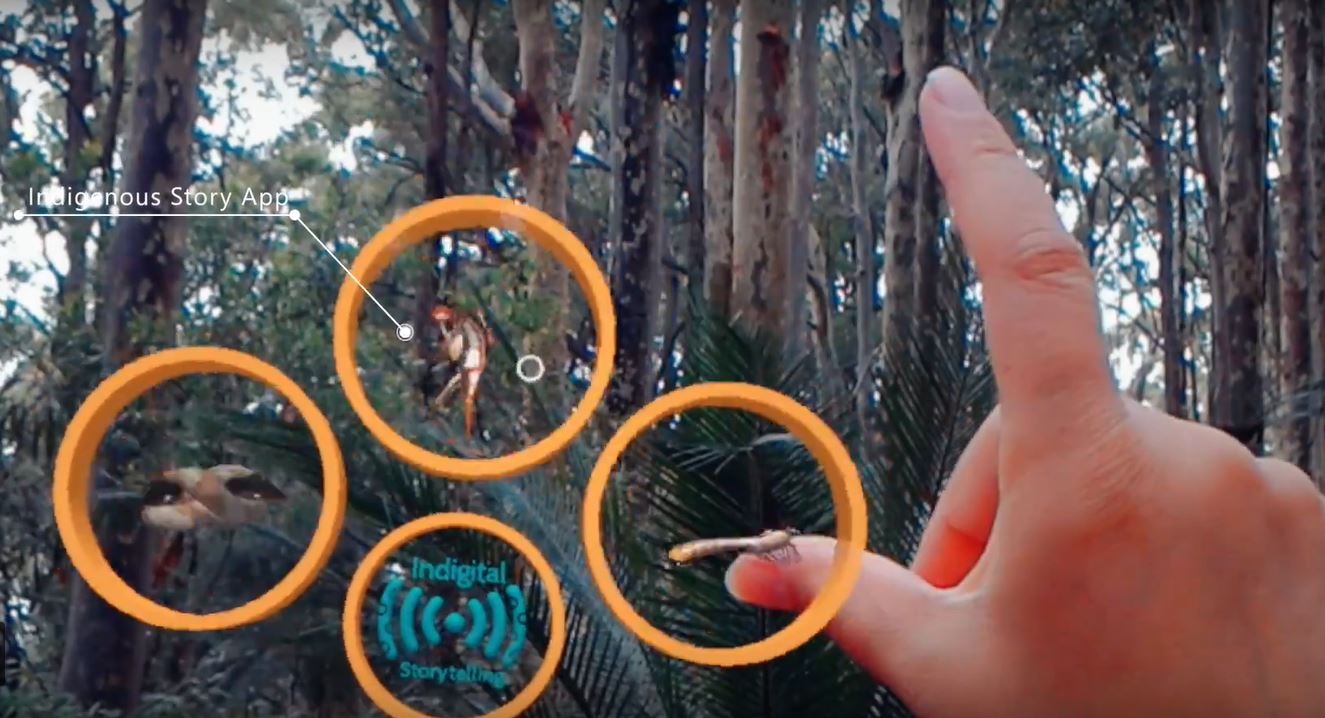
Kakadu is protected as a national park and is on the UNESCO’s World Heritage List – both for its outstanding natural value and cultural significance. Its amazing bio-diversity is matched by more than 5,000 breathtaking rock art sites created by indigenous people who have lived on, and cared for, this country for more than 50,000 years.
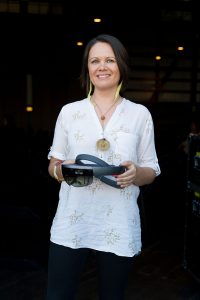
Mikaela Jade, a former park ranger, loves this place and founded Indigital to showcase its spiritual significance in the 21st century. She says the millennia-old lore of the traditional owners is not just a collection “bedtime stories”, but represent their “instructions for living on Planet Earth”.
Her team is presently working on a HoloLens-based system – that marries new technology with the bark ochre paintings of artist Neville Namarnyilk – to tell the story of Namande, an ancient spirit in the landscape of Kakadu.
“When you put on the headset, Namande will be right in front of you,” says Mikaela. “You will see him the same way the Bininj people see him in the landscape – his songs and dance and his body paint and the dilly (woven) bag around his neck.”
Lawrence Crumpton, Microsoft’s Lead for HoloLens in Asia, says the Indigital HoloLens application not only makes indigenous insights accessible to broader Australia and global audiences, it also has the potential to help reverse a decline in inter-generation knowledge sharing within indigenous communities.
Harnessing modern technologies to communicate age-old wisdom is an impactful way to engage younger people without losing the integrity of the content, he says.
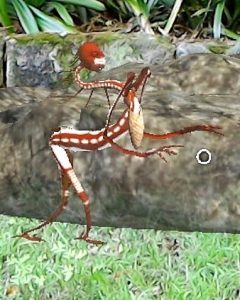
“In the Aboriginal tradition, they never wrote it down; they shared experiences face-to-face. For the first time ever, technology has now caught up to our senses. In a really natural way, we can see the content. We can engage with voice, with sight, in the real world,” says Lawrence.
“Australian Aboriginal culture is the oldest continuous culture on the planet. It’s so important and rewarding to see technology finally starting to catch up in a way that supports indigenous storytelling and cultural preservation.”
ALSO READ : Mixed reality brings new life to centuries-old Japanese artwork













